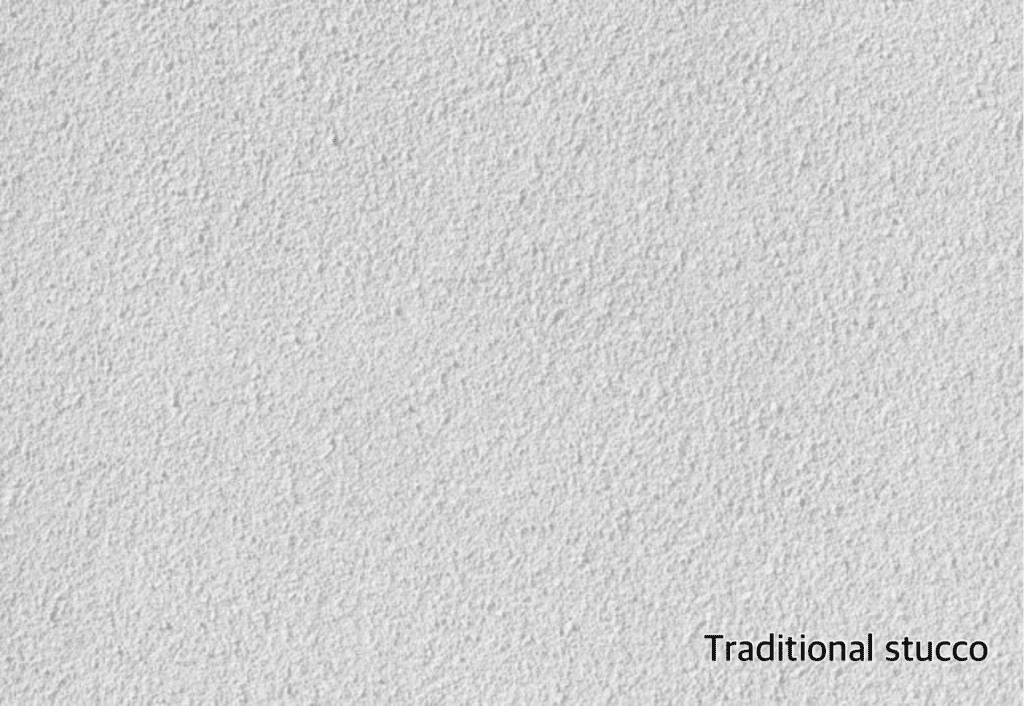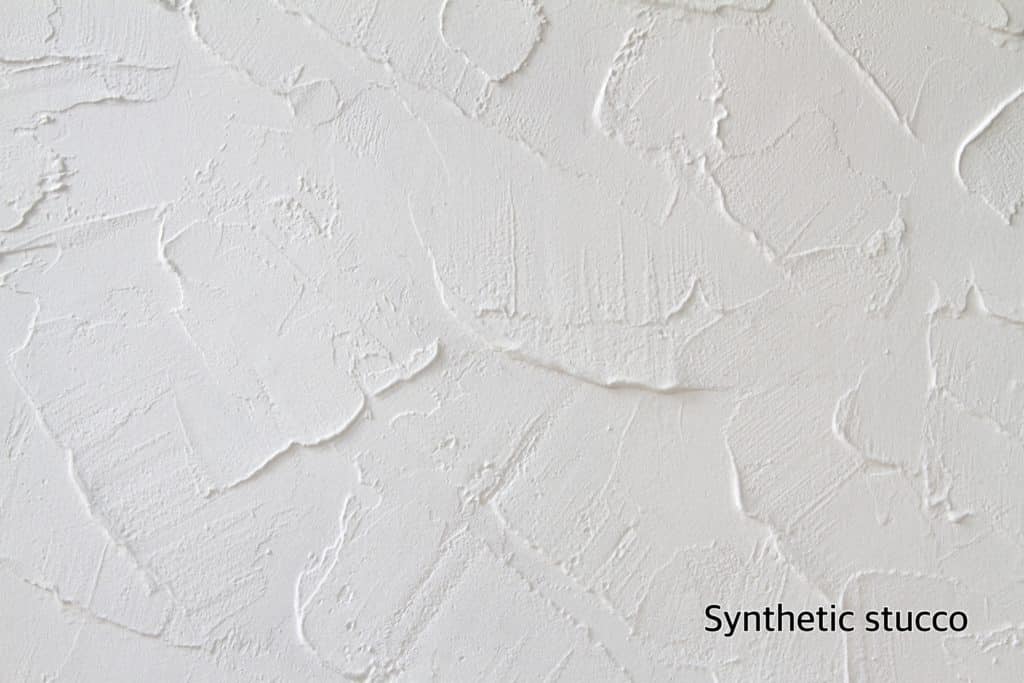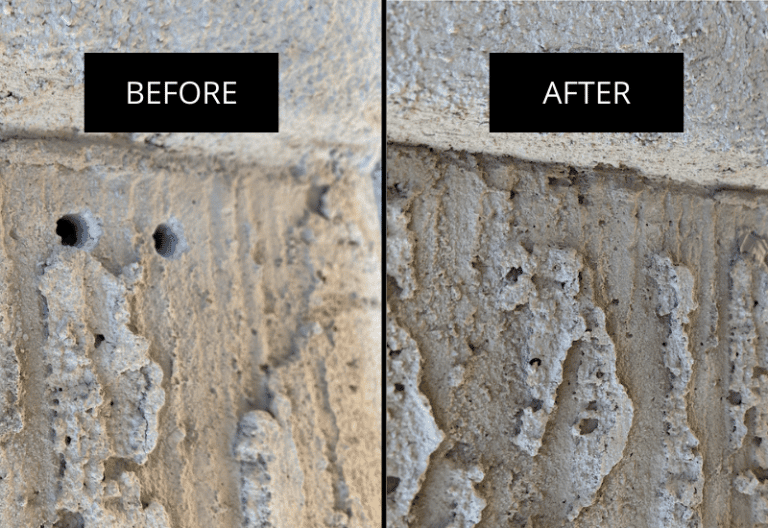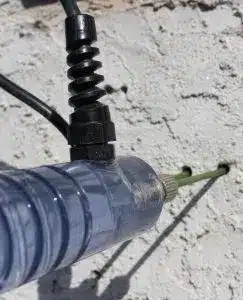Stucco is a prevalent material used for exterior walls, especially due to its durability, fire-resistant properties, and aesthetic appeal. However, there are times, like during invasive inspections, when professionals might need to drill into stucco. But how do we drill into stucco effectively and without causing damage?
Identifying the Stucco Material
Understanding the type of stucco on the wall is crucial before starting the drilling process:
Traditional Stucco
This is a combination of sand, cement, lime, and water. This type of stucco material, often referred to as cement stucco or Portland cement, is harder and more like concrete in texture.

Synthetic Stucco or EIFS Stucco
More flexible than traditional stucco, it consists of foam insulation beneath a decorative coating.

Click HERE to learn more about the differences between Traditional and EIFS Stucco.
Tools and Materials Needed
To drill into stucco, an inspector will use these tools:
Drill: A hammer drill is preferable, especially for cement stucco.
Drill Bit: The proper drill bit makes all the difference. For stucco drilling, you’ll need masonry drill bits. These come with carbide tips or even diamond tips for added strength. Whether you’re using a masonry drill bit or any other drill bit, ensure it’s suitable for stucco material.
Safety Equipment: Don’t forget safety goggles to protect your eyes from flying debris.
Tape Measure and Pencil: For precision, use a tape measure and pencil to mark the exact spot where you wish to drill.
Compressed Air: A battery powered blower is used to blow away any debris post-drilling.
Drilling into the Stucco Wall
Mark Your Spot: Using the pencil and tape measure, mark the exact spot you plan to drill. This ensures precision, especially if you’re hanging things or need the hole at a specific ground level.
Choose the Right Drill Bit: Remember, different drill bits are suited for traditional and synthetic stucco. Ensure you’ve got the right masonry bit with carbide or diamond tips for your wall type.
Start Drilling: Place your drill perpendicular to the surface. Apply steady pressure and start drilling into the stucco. Be cautious not to drill too deep to avoid hitting any electrical wiring or the wire mesh inside.
Clean Up: After drilling stucco, use compressed air or a brush to remove debris from the drilled hole.
Filling the Hole

Post-inspection, the inspector will fill the holes.
Stucco Caulk
For holes, a stucco caulk is ideal. It blends well with the stucco material and seals the hole effectively. Injecting caulk into a stucco hole is widely considered the best method to fill and repair minor damage to stucco exteriors, and there are several reasons to support this. Firstly, caulk is highly flexible, allowing it to expand and contract with temperature fluctuations, which mirrors the natural movement of stucco. This ensures a longer-lasting repair without the risk of the filled material cracking or pulling away from the surrounding stucco. Additionally, caulk provides an excellent waterproof barrier, crucial for maintaining the integrity of stucco and preventing potential water damage. Moreover, with various caulks available that are designed to match the texture and color of stucco, it’s possible to achieve a seamless repair, making it almost indistinguishable from the original surface. This simplicity and effectiveness make caulk the go-to choice for many homeowners and professionals when addressing stucco repairs.
Understanding how to drill into stucco requires knowledge of the stucco material, the right tools, and precision. Inspectors at Stucco Safe will make sure to always remember to double-check their markings and ensure they’re using the right drill bits for the job. Proper care and technique will ensure your stucco wall remains as pristine as before your inspection.
When it comes to home improvement, especially concerning home exteriors, understanding how to drill into stucco is essential.

Stucco walls are prevalent due to their durable nature, but drilling into stucco without the right knowledge can cause unwanted damage. So, how do you drill into these sturdy walls? Start with the right drill. While a standard drill or electric drill might do the job for light tasks, a hammer drill is often recommended for a stucco wall. When it comes to choosing the drill bit, the masonry bit with diamond tips is your best bet. These bits are specifically designed to penetrate the concrete-like composition of stucco without causing it to crumble. Drilling with precision ensures that the desired depth is achieved without harming the structural integrity of the wall. Once your hole is drilled, you may need to patch it up, especially if it’s a test hole or a mistake. Stucco caulk comes to the rescue in such situations, offering a seamless blend with the existing wall. If dust or debris remains post-drilling, a quick blast from compressed air will clear the hole. Remember, the key is the right drill, a suitable drill bit, and proper technique.

